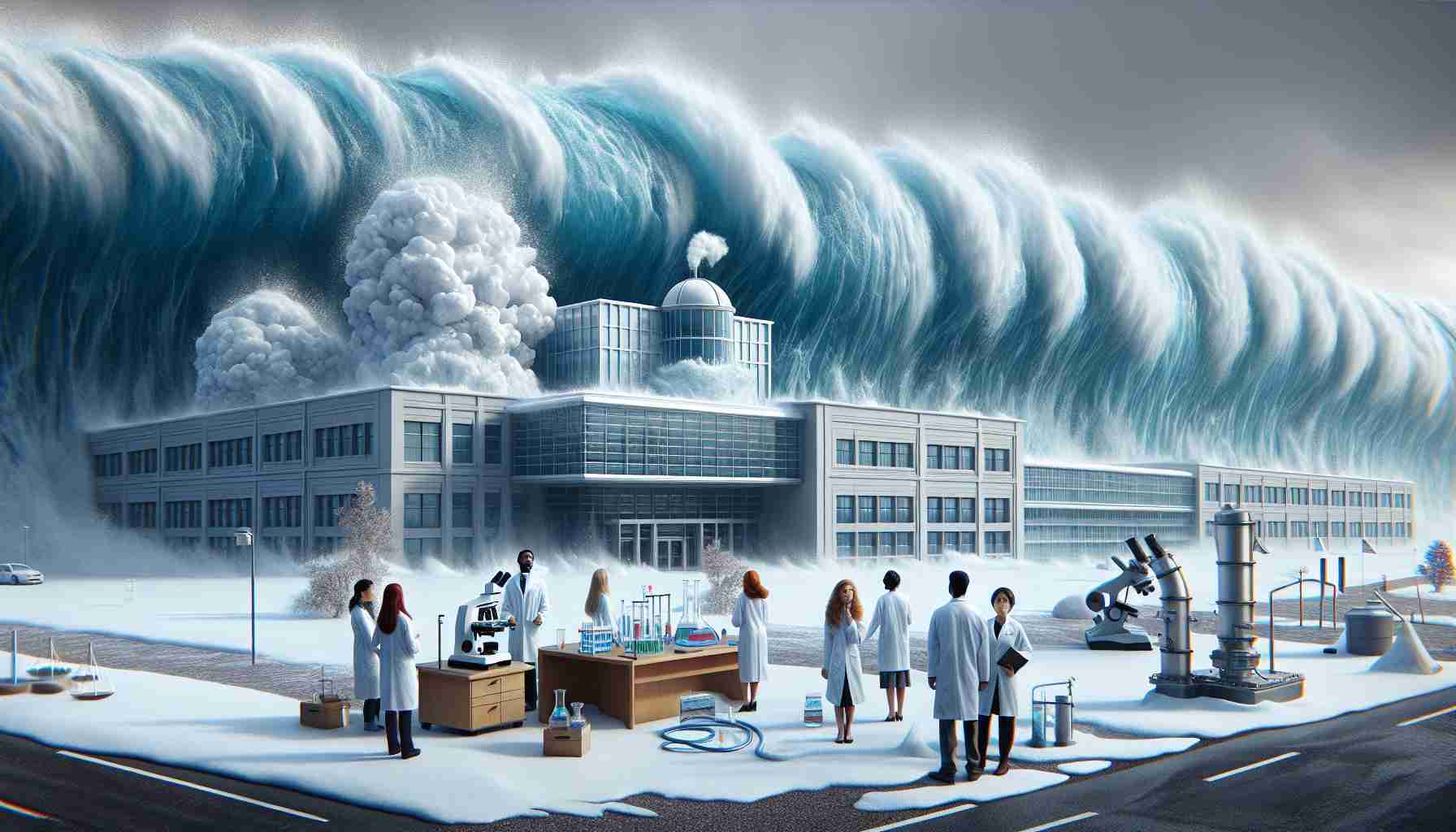- The sudden funding freeze by the National Science Foundation (NSF) has stalled crucial DNA research on microbes and threatens scientific progress.
- Conflicting governmental directives on diversity and inclusion contribute to the funding crisis, reflecting the complex political landscape.
- Key scientific discoveries could be delayed, impacting researchers and the broader ecosystem reliant on innovation.
- Despite challenges, there is optimism with initiatives like the CHIPS and Science Act that promote STEM participation and future solutions.
- The scientific community advocates for fair, continuous funding and encourages collaboration with private institutions and public support.
- Stable funding is essential for sustained innovation, requiring science to transcend political issues to ensure future progress.
Storm Clouds Over Science
At the heart of a brewing crisis, researchers like Julia Van Etten, a dedicated biologist at Woods Hole Oceanographic Institution, find their vital DNA research on microbes stalled by a sudden funding freeze. This freeze by the National Science Foundation (NSF) has halted all financial disbursements, leaving scientists scrambling to sustain both their research and daily living.
A Crisis of Political Dimensions
The current pause in funding arises from conflicting governmental directives regarding diversity and inclusion—an echo of the complex political landscape influencing scientific progress. The freeze places innovative projects at risk and cultivates uncertainty about the future of scientific advancement.
The Domino Effect on Innovation
With the NSF grants in limbo, the potential ripple effect on scientific development is profound. Essential discoveries could face delays, affecting not only the researchers but also the broader ecosystem that thrives on new insights and technological breakthroughs.
Hope Amidst the Turbulence
Despite the challenges, there is an undercurrent of optimism. Legislation like the CHIPS and Science Act encourages wider STEM participation, signaling a push towards future solutions. However, navigating these murky waters demands resilient strategies and effective funding frameworks.
The Fight for Fair Funding
The scientific community’s call for fair, continuous funding models resonates stronger than ever. Researchers are urged to seek alternative avenues, partner with private institutions, and rally public support to sustain their indispensable work. The future of global competitiveness in scientific innovation hinges on resolving this impasse.
In essence, the message is clear: Stable funding is the lifeline for innovation. Science must persist beyond political stalemates to ensure a thriving future.
The Unseen Battle: Survival of Science Amid Funding Turmoil
Exploring the Funding Freeze Impact on Science
The recent halt in National Science Foundation (NSF) funding has created a precarious situation for researchers and the progression of vital scientific work. This issue, primarily centered on conflicting directives concerning diversity and inclusion, underscores a troubling intersection of politics and scientific advancement. Key questions arise related to the sustainability of scientific research, alternative funding strategies, and the broader implications for global scientific innovation.
What are the primary effects of the NSF funding freeze on scientific research?
The NSF funding freeze has led to a significant disruption in scientific research, with multiple consequences:
– Delays in Research: Projects dependent on continuous funding are facing interruptions. For example, Julia Van Etten and her team are unable to proceed with critical DNA studies on microbes, threatening timelines and the potential for discoveries.
– Financial Strain on Researchers: Scientists reliant on grants face financial instability, compelling them to find alternative income or halt personal contributions to their work.
– Innovation Stagnation: The freeze may lead to a domino effect, delaying scientific advancements and technological breakthroughs crucial for addressing global challenges.
How can researchers navigate the current funding crisis?
Researchers can employ various strategies to cope with the challenges posed by the funding freeze:
– Diversifying Financial Resources: By seeking grants from private institutions, non-profit organizations, and international research bodies, scientists can partially mitigate funding shortages.
– Public Engagement and Awareness: Raising public awareness and support may lead to grassroots funding opportunities and foster a supportive environment for policy change.
– Strengthening Collaborations: Partnering with other research entities can provide shared resources, knowledge, and financial support, ensuring continuity in critical projects.
What does the future look like for scientific research funding?
The future of scientific funding relies heavily on responsive policy adjustments and innovative funding solutions:
– Legislative Developments: Initiatives like the CHIPS and Science Act aim to bolster STEM fields, suggesting potential avenues for more stable financial backing in the future.
– Exploration of Alternative Models: There is a growing call for sustainable funding models that incorporate a diverse range of contributors and resources.
– Predictive Policy Adjustments: Policymakers are urged to craft adaptive policies that safeguard scientific research from political upheavals, thereby securing its uninterrupted advancement.
Related Links:
Explore further insights and updates on the NSF and scientific funding landscape:
– National Science Foundation
– Woods Hole Oceanographic Institution
– CHIPS and Science Act
Science’s journey continues as researchers rally to ensure innovation thrives despite current setbacks. While challenges loom, the collective resolve and adaptability of the scientific community remain its greatest assets.













